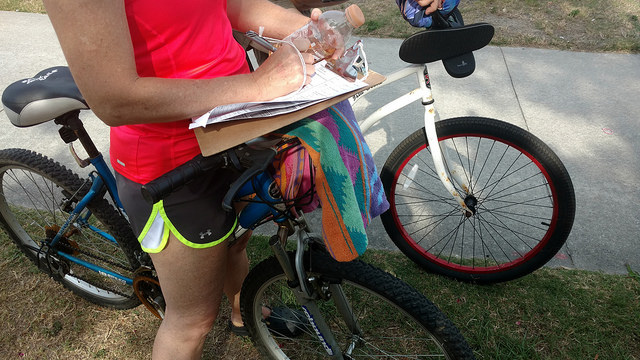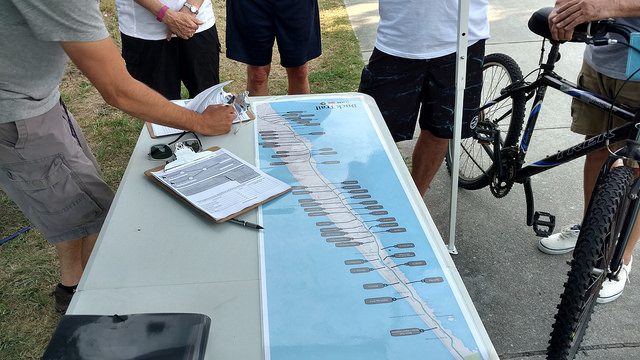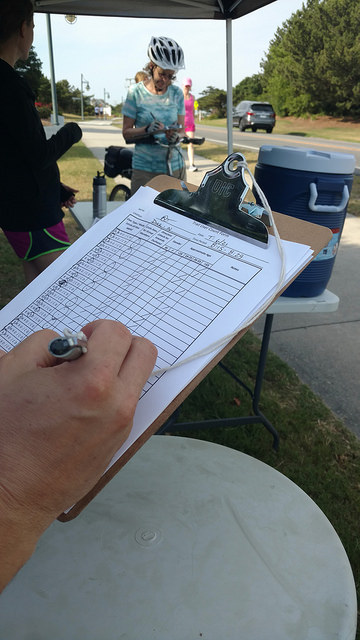About
Shared use paths (SUPs), also known as greenways or trails, are unique facilities physically separated from motor vehicle traffic that allow a shared space in which bicyclists, pedestrians, and sometimes equestrian or other non-motorized users can travel.
While some research has been conducted in North Carolina to understand the economic contribution that specific facilities like SUPs may have in a community, North Carolina is lacking in a comprehensive approach to evaluate the economic returns currently being generated by existing trails of regional significance that may lead to economic benefits to the state.
Project Objectives
The objective of this project was to design and test a methodology for consistently evaluating the economic contribution of shared use paths in North Carolina. This project began in March 2015 and was completed in February 2018.
The following criteria were used to select four SUPs to test the methodology:
- Have a state or regional significance.
- Have good opportunities to capture economic revenue.
- Were not impacted by construction, significant maintenance, or detouring during the project period.
- Are relatively ‘established’ (i.e. at least 5 years old with minimal adjacent land use changes anticipated).
- Have the ability to demonstrate a transportation function.
- Are geographically dispersed across North Carolina.
- Are a good mix between urban and rural areas.
The American Tobacco Trail (Durham, NC) and Brevard Greenway (Brevard, NC) were selected to be studied iteratively for three years. Duck Trail (Duck, NC) and the Little Sugar Creek Greenway (Charlotte, NC) were selected to be studied as cross-sectional case studies. The iterative cases allowed for comparison of results across years to test the reliability of the methodology and potentially identify factors that may influence its application, such as seasonality. The additional cross-sectional cases provided a broader mix to test the methodology on different types of SUPs based on their land use contexts, user types, and expected trip purposes. This project structure allowed for eight separate studies to be conducted to test the methodology across three years. For each study, field data were collected through intercept surveys and manual counts at multiple data collection stations along each SUP on one weekday and one weekend day during daylight hours.
Various methods were tested to derive specific types of economic benefits from each of the eight case studies conducted. Based on testing and evaluation of the methods, this study provides empirical evidence that supports a consistent set of methodologies for estimating the economic contributions of SUPs in future research. The recommended SUP economic valuation methodologies are provided in the full research report and summary brochure that are posted below.
Project Resources
Information about the project and results are posted below.
American Tobacco Trail
- Project Map [PDF ] [JPG]
- Year 1 Tech Brief [PDF | 6 MB]
- Year 2 Tech Brief [PDF | 6 MB]
- Year 3 Tech Brief [PDF | 6 MB]
Brevard Greenway
- Project Map [PDF ] [JPG]
- Year 1 Tech Brief [PDF | 11 MB]
- Year 2 Tech Brief [PDF | 10 MB]
- Year 3 Tech Brief [PDF | 9 MB]
Duck Trail
Little Sugar Creek Greenway
Final Report and Summary Brochure
Additional Project Resources



Contact
Sarah Searcy
Bicycle & Pedestrian Program Manager
(919) 515-8703 | sesearcy@ncsu.edu
Blythe Carter Geiger
Research Associate
(919) 515-8751 | bacarte2@ncsu.edu